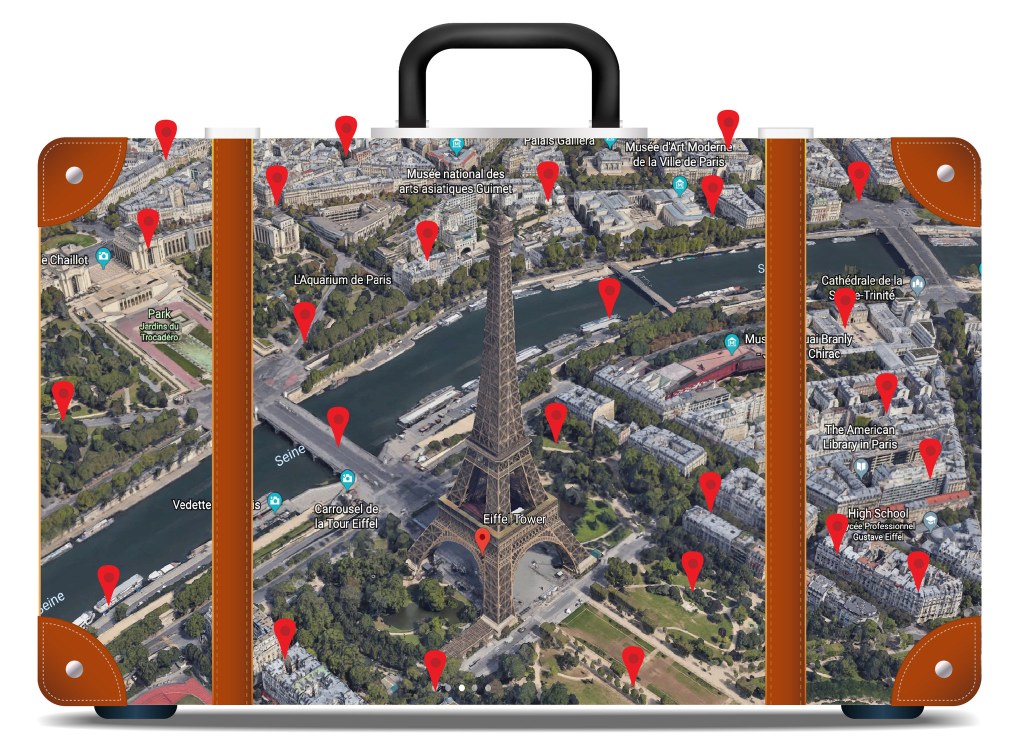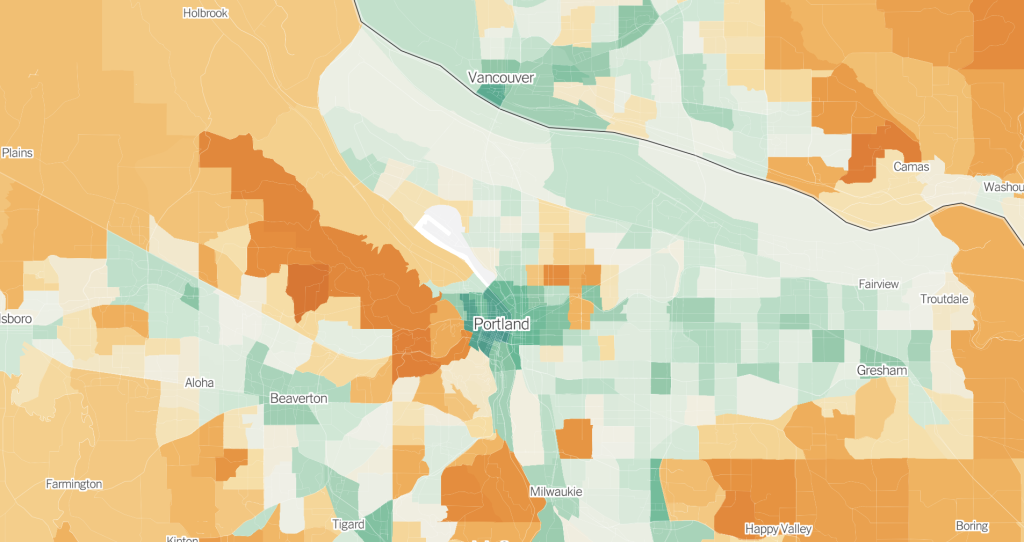City Planners Map NYT: Revolutionizing Urban Planning
Introduction
Hello, map enthusiasts! Are you ready to explore the groundbreaking world of city planning? In this article, we will delve into the fascinating City Planners Map by The New York Times (NYT). This innovative tool has revolutionized the way urban planners analyze and visualize cities. Join us as we uncover the key aspects, advantages, and limitations of this powerful mapping platform.
In the fast-paced and ever-evolving urban landscape, city planners face numerous challenges in ensuring sustainable and efficient development. The City Planners Map NYT has emerged as a game-changer, providing planners with comprehensive data and visualization tools to make informed decisions. Let’s take a closer look at what makes this mapping platform so remarkable.
What is City Planners Map NYT? 🗺️
The City Planners Map NYT is an interactive mapping tool designed specifically for urban planners. Developed by The New York Times, it offers a vast array of data and visualizations to help professionals analyze cities and plan for their future growth effectively. This user-friendly platform harnesses the power of cutting-edge technology to provide in-depth insights into various aspects of urban planning.
Data-rich Features 📊
One of the highlights of the City Planners Map NYT is its extensive collection of data. By aggregating and visualizing data from diverse sources such as government agencies, satellite imagery, and social media, this platform offers a comprehensive understanding of cities. From population density to transportation networks, from environmental factors to public amenities, planners can access a wealth of information to inform their decisions.
Interactive Visualizations 🌆

Image Source: nyt.com
Visualizing complex data can be a daunting task, but the City Planners Map NYT simplifies this process. With interactive maps and visualizations, planners can explore cities from multiple angles, uncovering patterns, trends, and potential areas for improvement. These dynamic visualizations enable users to toggle between different layers of information, gaining valuable insights into urban dynamics.
Collaborative Tools 🤝
The City Planners Map NYT also fosters collaboration among planning professionals. With its built-in sharing and collaboration features, users can easily share maps, data, and analyses with colleagues and stakeholders. This facilitates efficient teamwork and ensures that everyone involved in the planning process has access to the same up-to-date information.
Real-time Updates ⏰
Keeping up with the rapid changes in urban environments is crucial for effective planning. The City Planners Map NYT addresses this need by providing real-time updates. Whether it’s tracking population growth, monitoring transportation patterns, or assessing the impact of new developments, planners can rely on the most current data to make informed decisions.
User-friendly Interface 🖥️
City planners are not necessarily GIS experts, and the City Planners Map NYT understands this. Its intuitive and user-friendly interface allows planners to easily navigate the platform and access the desired information. Minimal learning curve ensures that planners can quickly adapt to and utilize the platform to its full potential.
Coverage and Accessibility 🌍

Image Source: nyt.com
The City Planners Map NYT covers an extensive range of cities, both within the United States and around the world. This global coverage enables planners to compare and learn from different urban contexts, fostering an exchange of best practices. Furthermore, the platform’s accessibility via desktop and mobile devices ensures that planners can work anytime, anywhere, according to their convenience.
Who Benefits from City Planners Map NYT? 🙌
The City Planners Map NYT caters to a wide range of users involved in urban planning and development. Let’s explore some of the key beneficiaries:
Urban Planners and Designers 🏢
For professionals working directly in urban planning and design, the City Planners Map NYT opens up a world of possibilities. It equips them with the necessary tools to analyze cities comprehensively, identify potential areas for improvement, and make informed decisions regarding zoning, infrastructure development, and public services.
Government Agencies 🏛️
Government agencies responsible for urban development can leverage the City Planners Map NYT to gain valuable insights into their cities’ dynamics. With real-time data at their fingertips, they can monitor urban growth, assess the impact of policies, and allocate resources effectively to meet the needs of the population.
Non-profit Organizations and Advocacy Groups 🌐

Image Source: bikeportland.org
Non-profit organizations and advocacy groups focused on urban issues can utilize the City Planners Map NYT to support their causes. By visualizing data related to social inequalities, environmental concerns, or transportation accessibility, they can raise awareness, advocate for change, and lobby for inclusive and sustainable urban development.
Researchers and Academics 🎓
Researchers and academics in the field of urban studies can benefit greatly from the City Planners Map NYT. Its vast collection of data and visualizations provides a rich source for research, enabling scholars to analyze urban phenomena, test theories, and contribute to the knowledge base in urban planning and development.
Community Stakeholders 🏘️
Engaging local communities in the planning process is crucial for successful urban development. The City Planners Map NYT allows community stakeholders to visualize and understand the implications of proposed changes, fostering participatory decision-making and ensuring that the voices of residents are heard.
When to Use City Planners Map NYT? ⏰
The City Planners Map NYT can be employed at various stages of the planning process. Here are a few key scenarios where this mapping platform proves invaluable:
Master Planning and Development ⚒️
During the master planning phase, where the long-term vision for a city is established, the City Planners Map NYT helps identify areas for future growth, determine transportation networks, and allocate resources effectively. It allows planners to simulate different scenarios and ensure the proposed developments align with the overall vision.
Zoning and Land Use 🏗️
When it comes to zoning and land use, the City Planners Map NYT streamlines the process. Planners can analyze the current land use patterns, identify areas with potential for redevelopment, and designate appropriate zones for residential, commercial, or industrial purposes, ensuring a balanced and sustainable urban fabric.
Transportation Planning 🚆
Efficient transportation infrastructure is vital for a well-functioning city. With the City Planners Map NYT, planners can analyze existing transportation networks, identify bottlenecks, and plan for future improvements. Whether it’s optimizing transit routes or enhancing cycling infrastructure, this mapping platform aids in crafting effective transportation plans.
Environmental Sustainability ♻️
As cities strive to become more sustainable, the City Planners Map NYT supports environmental planning efforts. Planners can analyze data related to air quality, green spaces, and energy consumption, identifying areas for improvement and formulating strategies to mitigate the impact of urban development on the environment.
Disaster Preparedness and Resilience 🌊
In the face of natural disasters and climate change, cities need to be prepared and resilient. The City Planners Map NYT facilitates disaster planning by providing data on flood-prone areas, evacuation routes, and critical infrastructure. Planners can use this information to develop strategies that enhance resilience and ensure the safety of residents.
Where Can You Access City Planners Map NYT? 🌍
The City Planners Map NYT is accessible online through the official website of The New York Times. It can be accessed via desktop computers, laptops, tablets, and smartphones, ensuring that planners can work seamlessly regardless of their location or device of choice.
Why Choose City Planners Map NYT? 🌟
The City Planners Map NYT has gained popularity among urban planning professionals for numerous reasons:
Comprehensive Data Set 📊
The platform offers an extensive collection of data from various sources, ensuring that planners have access to the most relevant and up-to-date information for their analysis and decision-making.
Intuitive User Interface 🖥️
The user-friendly interface of the City Planners Map NYT requires minimal training, allowing planners to quickly adapt to the platform and maximize its potential without being GIS experts.
Dynamic Visualizations 🌆
The interactive maps and visualizations enable planners to explore cities from different angles and gain valuable insights into urban dynamics, helping them make informed decisions.
Real-time Updates ⏰
The City Planners Map NYT provides real-time updates, ensuring that planners have access to the most current data and can respond promptly to the evolving urban landscape.
Collaborative Features 🤝
The platform’s sharing and collaboration features foster efficient teamwork among planning professionals, enabling seamless knowledge exchange and enhancing the overall planning process.
Global Coverage 🌍
With its global coverage, the City Planners Map NYT allows planners to compare and learn from different urban contexts worldwide, facilitating the exchange of best practices and innovative ideas.
Accessibility 🌐
The platform is accessible via various devices, ensuring that planners can work anytime, anywhere, according to their convenience and the demands of their projects.
How to Utilize City Planners Map NYT? 🧰
Getting started with the City Planners Map NYT is simple:
Explore the Interface 🖱️
Take some time to familiarize yourself with the platform’s interface and features. Navigate through different layers of information, experiment with the visualization options, and get a feel for how the platform can support your planning efforts.
Select a City 🌆
Choose the city you wish to analyze from the available options. Whether it’s your own city or a case study of interest, the City Planners Map NYT covers a wide range of urban areas to cater to your needs.
Access Relevant Data 🔍
Identify the specific data sets that are most relevant to your analysis. The City Planners Map NYT offers a diverse range of data categories, allowing you to focus on the aspects that align with your objectives.
Create Visualizations 📈
Utilize the platform’s visualization tools to create maps and visualizations that represent the data you have selected. Experiment with different styles and overlays to uncover patterns and trends that can inform your planning decisions.
Collaborate and Share 🤝
Engage with your colleagues and stakeholders by sharing the maps, data, and analyses you have created. Leverage the platform’s collaborative features to foster efficient teamwork and ensure that everyone involved in the planning process has access to the same up-to-date information.
Stay Updated and Evolve 🔄
Continuously monitor the platform for updates, new data sets, and enhanced features. As the field of urban planning evolves, so does the City Planners Map NYT. Stay informed and adapt your usage accordingly to maximize the value you derive from the platform.
Advantages and Disadvantages of City Planners Map NYT ⚖️
Like any tool, the City Planners Map NYT has its advantages and disadvantages. Let’s explore these:
Advantages:
1. Comprehensive Data Access
The platform provides planners with a vast collection of data from multiple sources, allowing for comprehensive analysis and decision-making.
2. User-friendly Interface
The intuitive interface ensures that planners can quickly adapt to the platform, minimizing the learning curve and maximizing productivity.
3. Dynamic Visualizations
The interactive maps and visualizations enable planners to gain unique insights into cities, uncovering patterns and trends that can inform their decisions.
4. Real-time Updates
With real-time data updates, planners can stay informed about the latest developments and respond promptly to evolving urban dynamics.
5. Collaboration Features
The platform’s sharing and collaboration features facilitate efficient teamwork, ensuring that all stakeholders have access to the same information.
6. Global Coverage
The City Planners Map NYT covers a wide range of cities globally, allowing planners to compare and learn from different urban contexts.
Disadvantages:
1. Data Limitations
While the platform offers a comprehensive data set, there may still be limitations in terms of specific data availability or accuracy.
2. Technical Requirements
Utilizing the City Planners Map NYT may require a certain level of technical expertise or access to compatible devices, limiting its accessibility for some users.
3. Reliance on Internet Connectivity
As an online platform, the City Planners Map NYT is dependent on stable internet connectivity, which may pose challenges in areas with limited access.
4. Learning Curve
Although the platform is user-friendly, there may still be a learning curve for individuals who are less familiar with mapping and data visualization.
5. Subscription Cost
Access to the full range of features and data sets on the City Planners Map NYT may require a subscription, which could present financial constraints for some users.